Physical Address
304 North Cardinal St.
Dorchester Center, MA 02124
Blue sweat gland tumors differentiate toward the secretory portion of the sweat gland. Red sweat gland tumors differentiate toward the sweat duct. Sweat duct tumors often demonstrate clear cell change. Most sweat gland tumors can show at least focal decapitation secretion, suggesting they are capable of apocrine differentiation.
Islands of blue cells with little cytoplasm
Dark and pale blue nuclei present
Jigsaw-puzzle pattern
Islands outlined by a deeply eosinophilic basement membrane
Deeply eosinophilic hyaline droplets may be noted in islands
Often inherited and multiple on the scalp
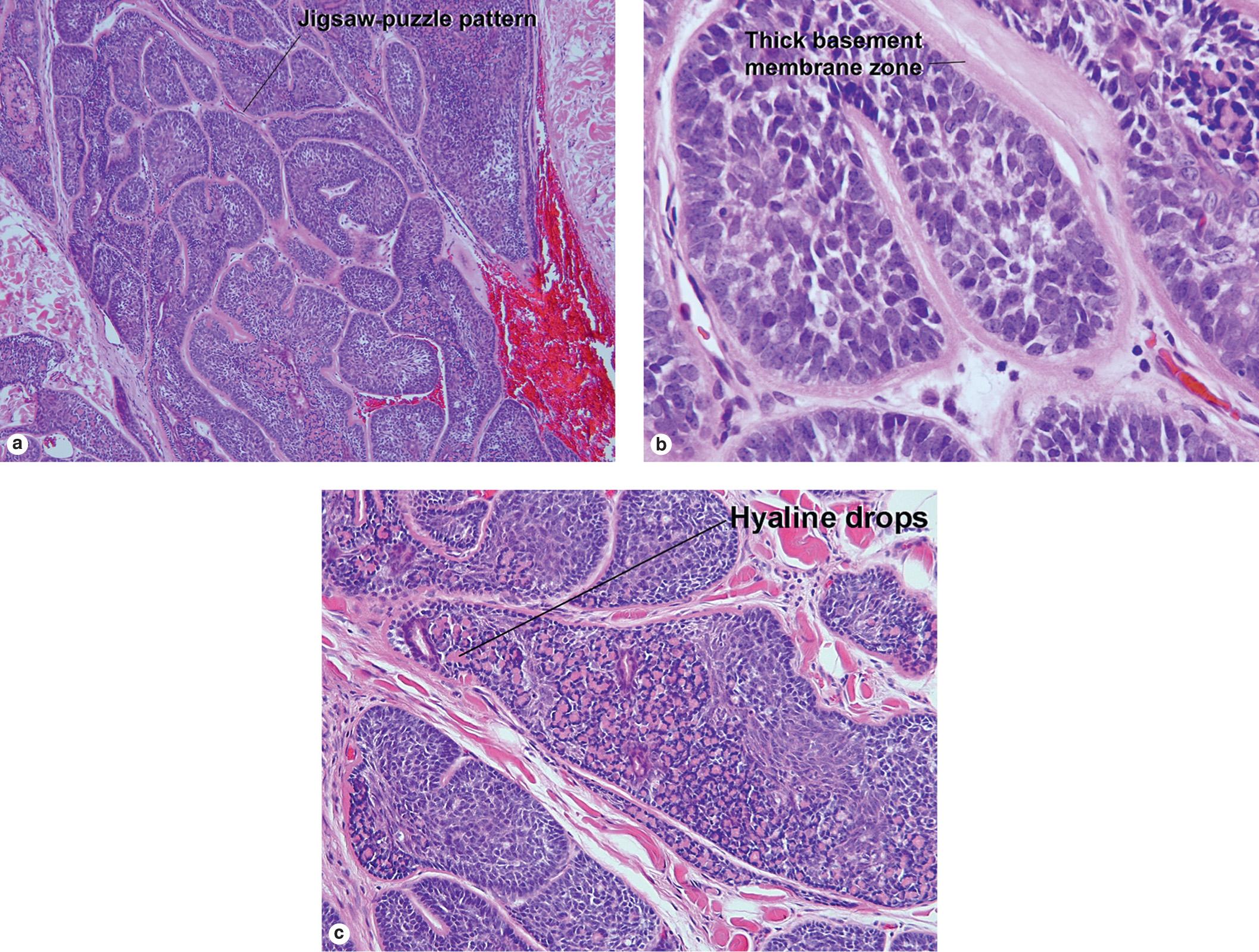
Larger round islands of blue cells with little cytoplasm
Dark and pale blue nuclei present
Islands peppered with black lymphocytes
Deeply eosinophilic hyaline droplets may be noted in islands
Usually solitary
Spiradenomas and cylindromas are closely related tumors. Both differentiate toward the secretory portion of the sweat gland. Hybrid tumors occur. Spiradenomas are usually sporadic and solitary, whereas cylindromas are multiple, inherited, and may occur together with trichoepitheliomas. Spiradenomas are inflamed (lymphocytes) and spontaneously tender.
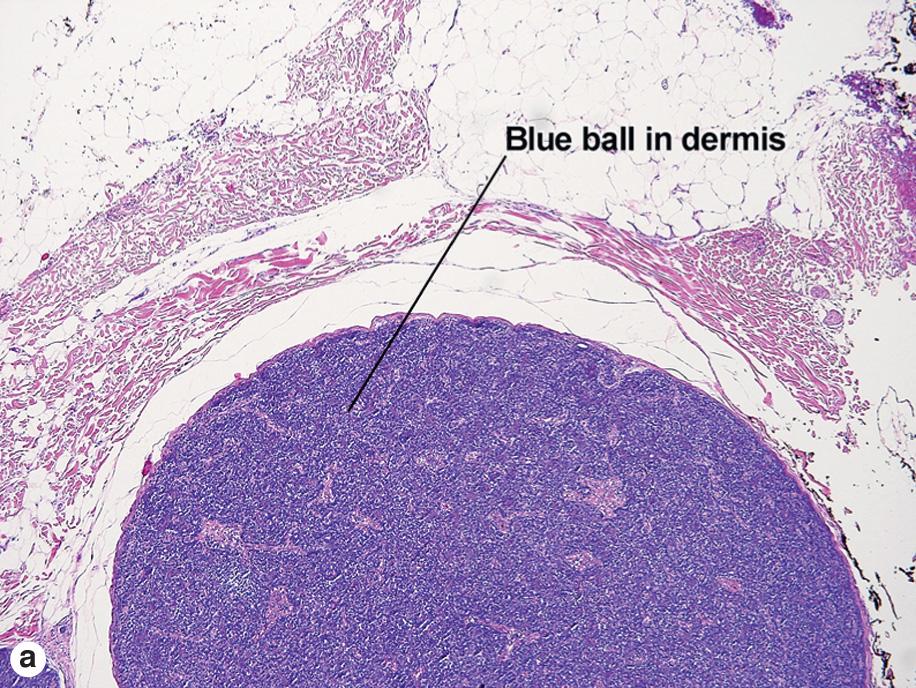
| Characteristic | Cylindroma | Spiradenoma |
|---|---|---|
| Blue cells with little cytoplasm | Yes | Yes |
| Dark and pale blue nuclei | Yes | Yes |
| Peppered with black lymphocytes | No | Yes |
| Hyaline droplets in nests | Yes | Yes |
| Jigsaw-puzzle pattern | Yes | No |
| Deeply eosinophilic basement membrane | Yes | No |
| Inheritance | Autosomal dominant | Sporadic |
| Tender | No | Yes |
Rare
Occurs in long-standing spiradenomas
Atypia, mitoses, and necrosis
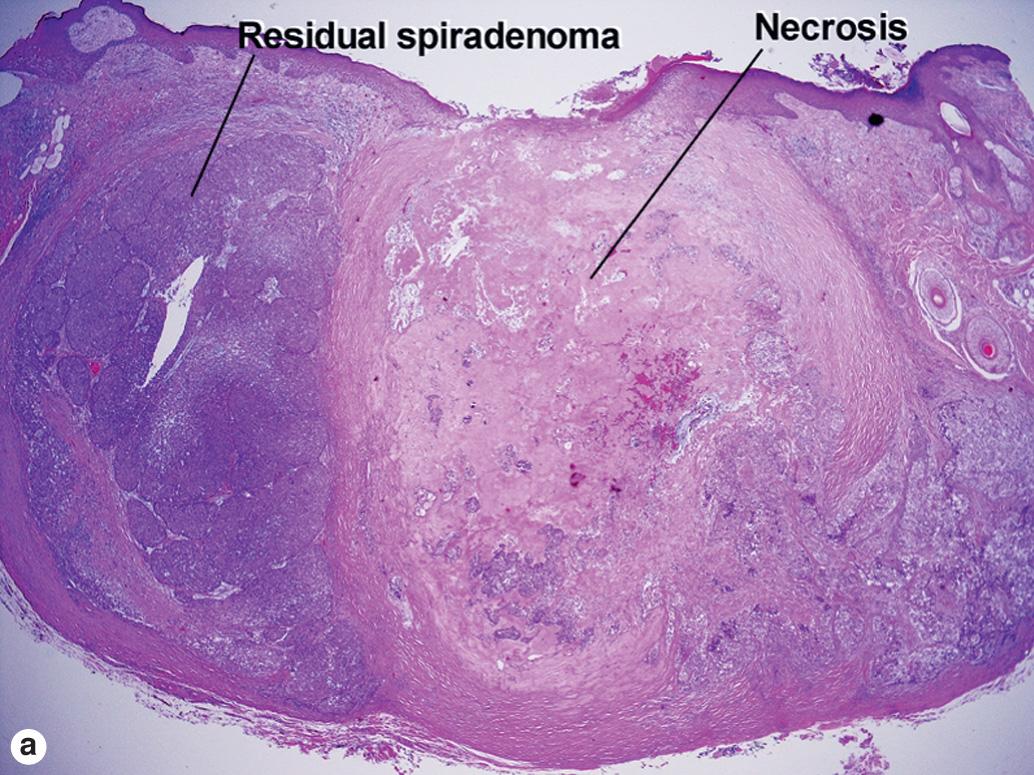
Opens to surface
Blue papillary fronds extending upward into clear spaces: “fjords and fronds”
Decapitation secretion
Plasma cells
Syringocystadenoma papilliform (SPAP) differentiates toward the secretory portion of the sweat gland, and S PAP opens to the s urface, which looks as though one could s lide into it. Plasma cells are typically present in the mesenchymal core of each frond. Clinically, they appear as raised warty plaques on the head or neck. One third of cases occur within nevus sebaceus.
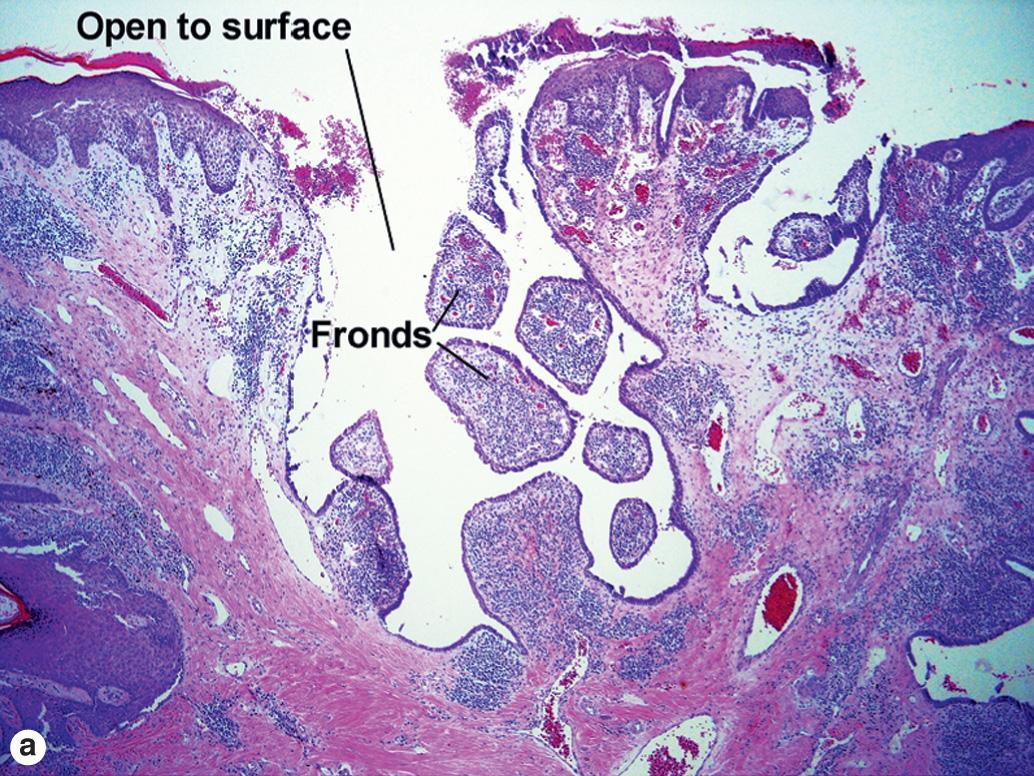
Blue dermal nodule with branching cystic spaces
Papillary fronds
Decapitation secretion
Hidradenoma papilliferum (HPAP) usually presents clinically as a vulvar dermal nodule, but occasionally presents on a breast, eyelid, or ear. Histologically, H PAP is a mazelike dermal nodule, which looks as though one could h ide in it. The arborizing pattern of blue fronds demonstrates decapitation secretion. Like SPAP, it differentiates toward the secretory segment.
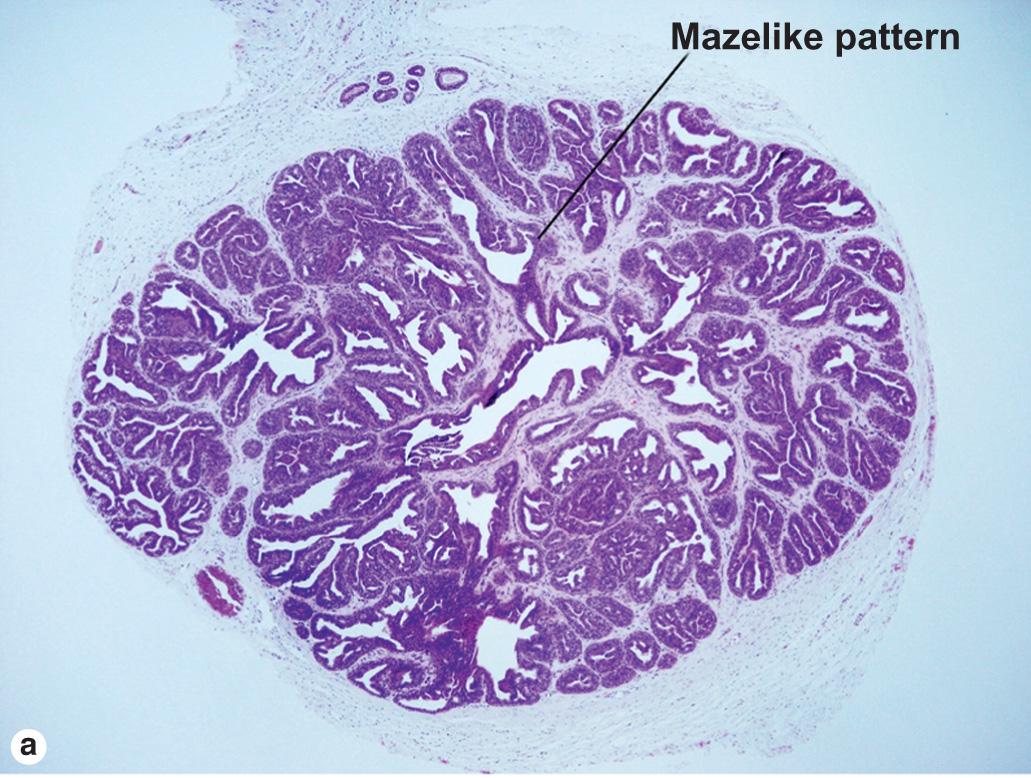
Blue tumor nodules with cystic change
Little to no visible cytoplasm
Papillary fronds
Atypia, mitoses, and necrosis variable
Typically involves the hand
Many patients are young
Even bland tumors can metastasize
There can be significant histologic similarities to HPAP. All digital papillary tumors should be considered carcinomas.
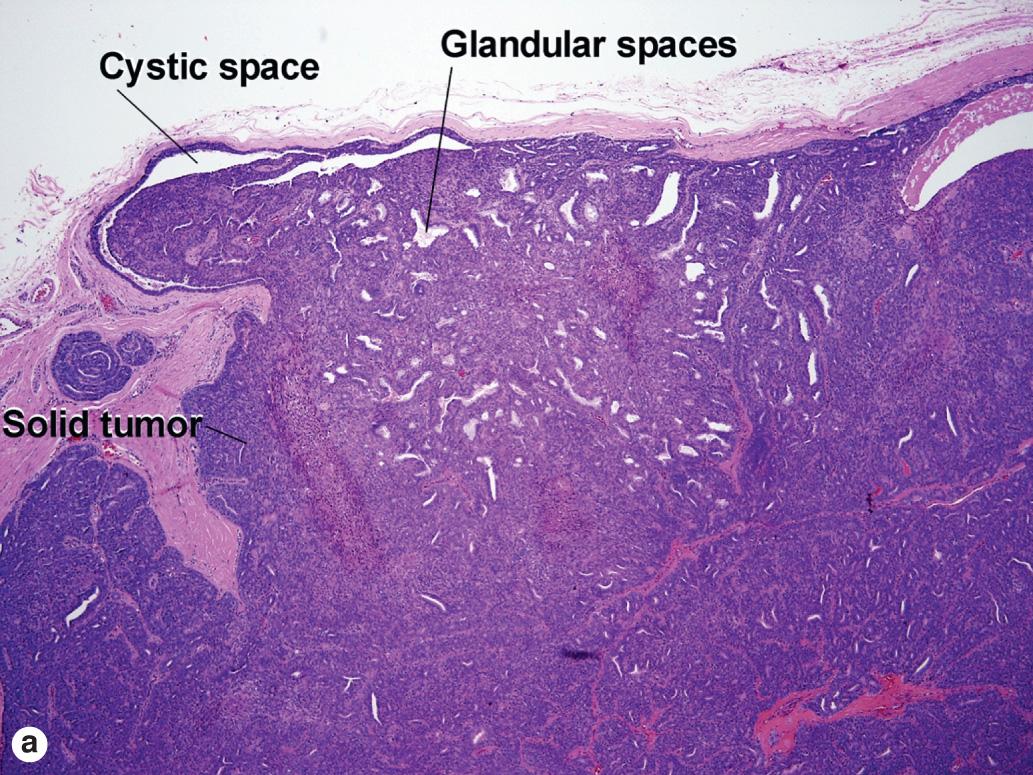
Islands of blue cells surrounded by mucin (“blue islands floating in a sea of snot”)
Primary cutaneous mucinous carcinoma and metastatic mucinous carcinoma look identical
Mucinous carcinoma can be primary in the skin or can be metastatic from a primary cancer of the breast or gastrointestinal tract. Imaging studies may be required
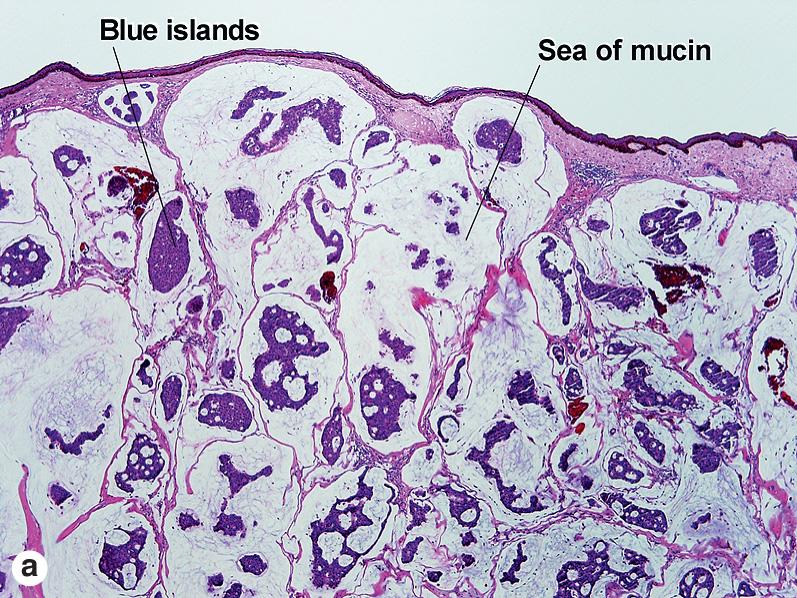
Paisley-tie pattern of tadpole-shaped ducts
Ample pink cytoplasm
Dense red sclerotic stroma
Tumor is small and round
Syrinx refers to a pipe or duct. Syringomas usually appear as small papules on the eyelids. They are especially common in Asian women and in children with Down syndrome. Eruptive syringomas typically occur on the chest, back, or penis of a dark-skinned patient. Eruptive syringomas appear as small hyperpigmented papules with no tendency to coalesce.
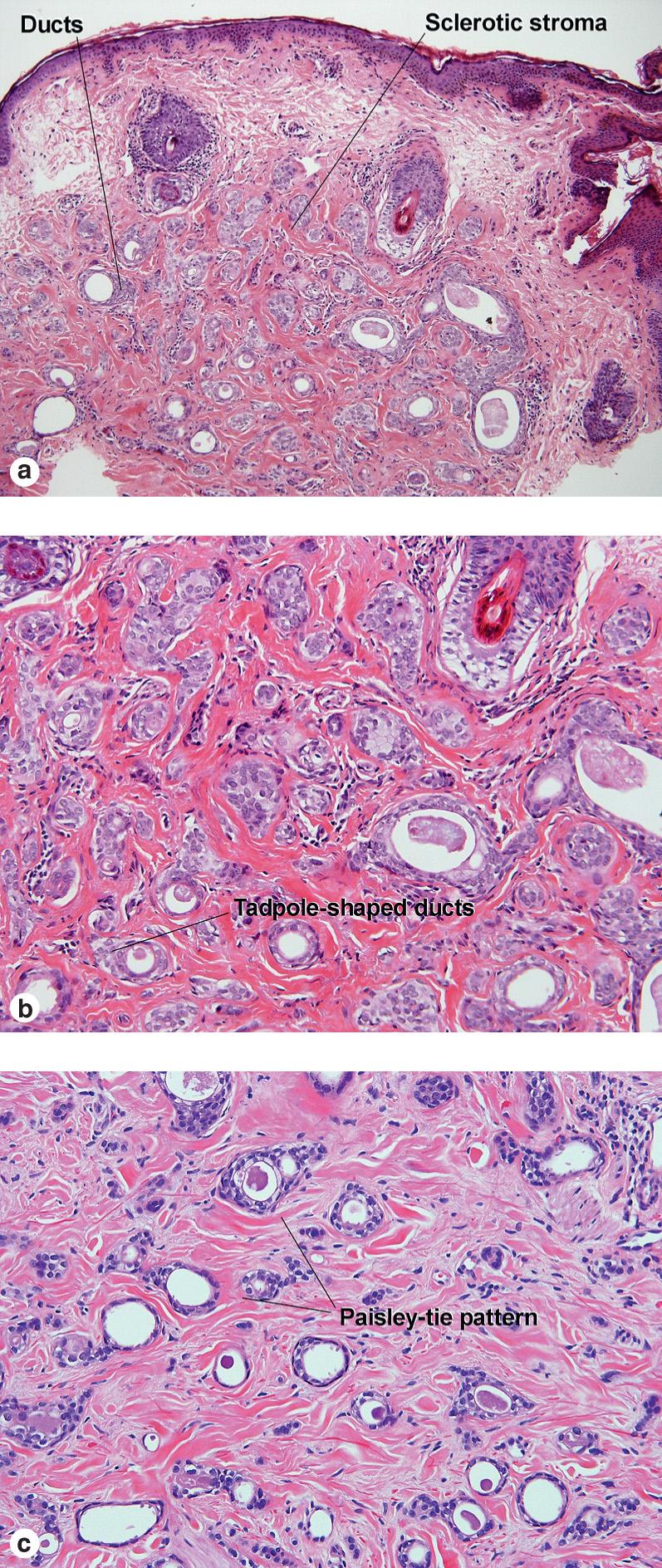
Paisley-tie pattern of tadpole-shaped ducts
Clear cells containing abundant glycogen
Dense red sclerotic stroma
Tumor is small and round
Associated with diabetes mellitus
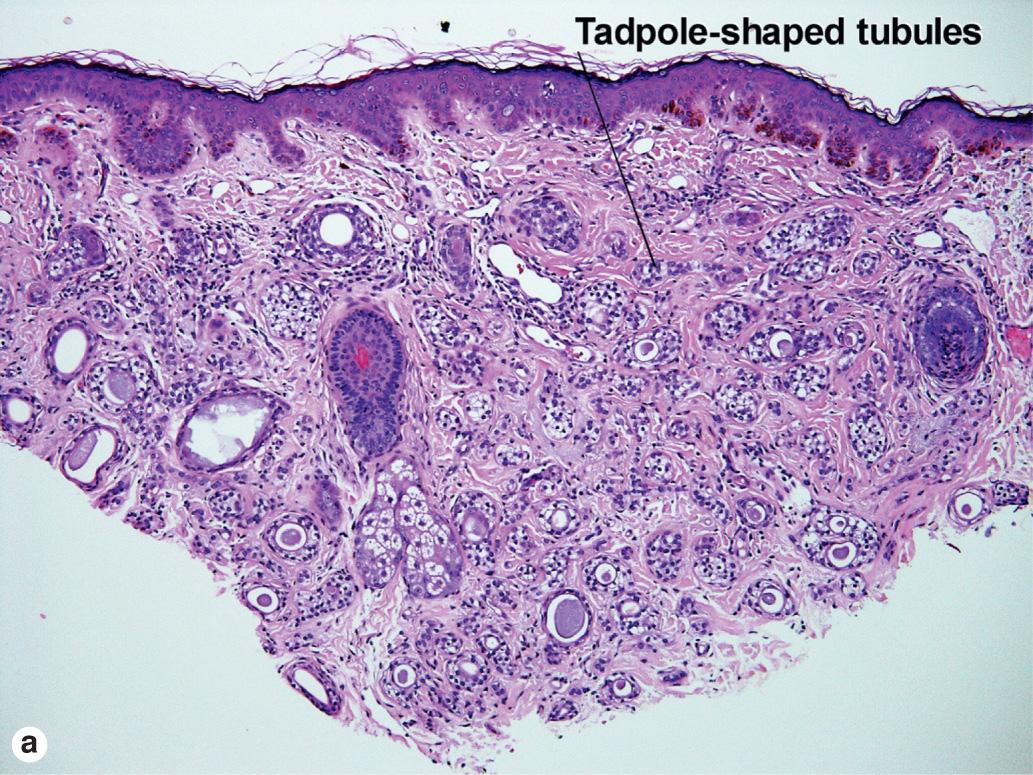
Become a Clinical Tree membership for Full access and enjoy Unlimited articles
If you are a member. Log in here